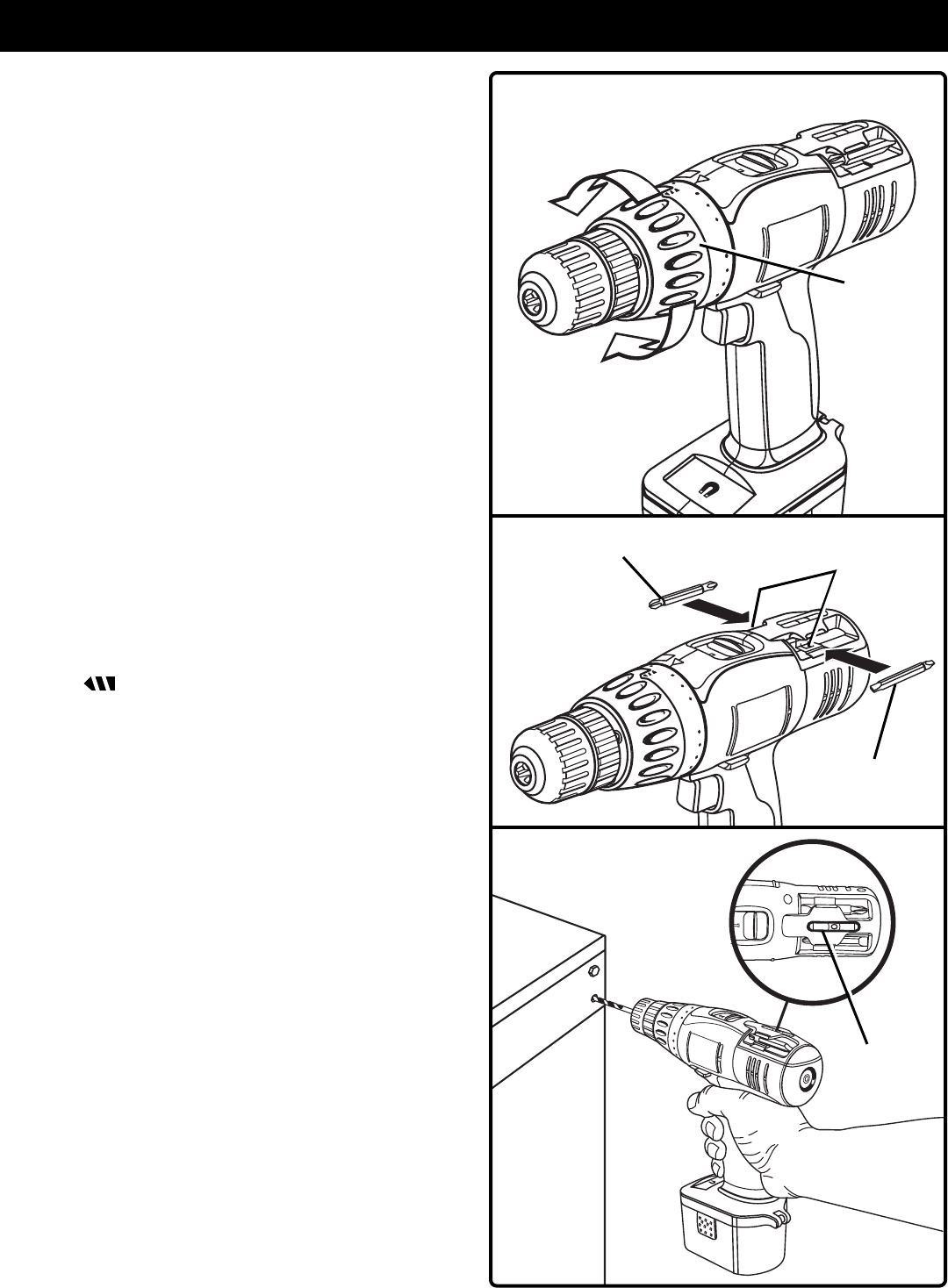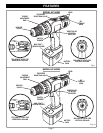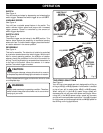
Page 12
20
20
24
5
20
24
5
OPERATION
SCREWDRIVING
TORQUE ADJUSTMENT
(Driving power of your drill-driver)
When using your drill-driver for various driving applications, it
becomes necessary to increase or decrease the torque in order
to help prevent the possibility of damaging screw heads,
threads, workpiece, etc. In general, torque intensity should
correspond to the screw diameter. If the torque is too high or the
screws too small, the screws may be damaged or broken.
The torque is adjusted by rotating the torque adjustment ring.
See Figure 11.
The torque is greater when the torque
adjustment ring is set on a higher setting. The torque is less
when the torque adjustment ring is set on a lower setting.
The proper setting depends on the type of material and the
size of screw you are using.
TO ADJUST TORQUE
■ Identify the twenty four torque indicator settings located
on the front of your drill.
See Figure 11.
■ Rotate adjustment ring to the desired setting.
• 1 - 4 For driving small screws.
• 5 - 8 For driving screws into soft material.
• 9 - 12 For driving screws into soft and hard
materials.
• 13 - 16 For driving screws in hard wood.
• 17 - 20 For driving large screws.
• 21 - For heavy drilling.
BIT STORAGE
See Figure 12.
When not in use, bits provided with your drill can be placed
in the storage area located on the top of your drill as shown
in figure 12.
LEVEL DRILLING
See Figures 13 and 14.
Two levels are recessed in the motor housing of your drill-
driver. One is located on top, while the other is located on
the end. They can be used to keep drill bits level during
both horizontal and vertical drilling operations.
Fig. 11
Fig. 12
TO DECREASE
TORQUE
TO INCREASE
TORQUE
TORQUE
ADJUSTMENT
RING
SCREWDRIVER BIT
LEVEL
Fig. 13
SCREWDRIVER BIT
BIT
STORAGE
AREA
TOP VIEW


















